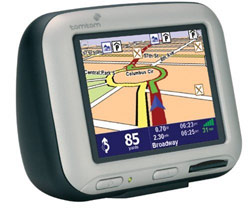Follow-Me Cruising: Implementing Bluetooth Proximity Detection with Asterisk and a TomTom GPS
Today we review the TomTom Go GPS units and show you how to connect one up to an Asterisk-based Bluetooth Proximity Detection system or, better yet, a home automation system to warm up that hot tub.



 JUST RELEASED: Visit the Incredible PBX Wiki
JUST RELEASED: Visit the Incredible PBX Wiki